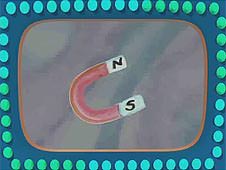[/caption]
Magnets are the unsung heroes of the Modern Age. However most people don’t really understand what are magnets made of and how they even work. The issue is that we just know that magnets attract iron and nickel. However, magnets have a very interesting origin and can be seen as a physical manifestation of the electromagnetic force.
All magnets are made of a group of metals called the ferromagnetic metals. These are metals such as nickel and iron. Each of these metals have the special property of being able to be magnetized uniformly. When we ask how a magnet works we are simply asking how the object we call a magnet exerts it’s magnetic field. The answer is actually quite interesting.
In every material there are several small magnetic fields called domains. Most of the times these domains are independent of each other and face different directions. However, a strong magnetic field can arrange the domains of any ferromagnetic metal so that they align to make a larger and stronger magnetic field. This is how most magnets are made.
The major difference among magnets is whether they are permanent or temporary. Temporary magnets lose their larger magnetic field over time as the domains return to their original positions. The most common way that magnets are produced is by heating them to their Curie temperature or beyond. The Curie temperature is the temperature at which a ferromagnetic metals gains magnetic properties. Heating a ferromagnetic material to its given temperature will make it magnetic for a while. While heating it beyond this point can make the magnetism permanent. Ferromagnetic materials can also be categorized into soft and hard metals. Soft metals loses their magnetic field over time after being magnetized while hard metals are likely candidates for becoming permanent magnets.
Not all magnets are manmade. Some magnets occur naturally in nature such as lodestone. This mineral was used in ancient times to make the first compasses. However, magnets have other uses. With the discovery of the relation between magnetism and electricity, magnets are now a major part of every electric motor and turbine in existence. Magnets have also been used in storing computer data. There is now a type of drive called a solid state drive that allows data to still be saved more efficiently on computers.
We have written many articles about magnets for Universe Today. Here’s an article about the Earth’s magnetic field, and here’s an article about the bar magnet.
If you’d like more info on Magnets, check out NASA’s Discussion on Magnets, and here’s a link to an article about Magnetic Fields.
We’ve also recorded an entire episode of Astronomy Cast all about Magnetism. Listen here, Episode 42: Magnetism Everywhere.

